
Shanxi has more than 50,000 immovable cultural relics and 28,027 ancient buildings, accounting for about 52%. Ancient buildings are undoubtedly the most important among the categories of cultural relics in Shanxi - Shanxi ranks first among all provinces in the country in terms of the number of national protected buildings, with a total of 531, of which 421 are ancient buildings. Thousands of years of hammering have forged every corner of the ancient buildings, making them more simple and mysterious, but it also brought them the hidden danger of destruction. Recently, the "Completion Ceremony of Shanxi Post-Disaster Cultural Relics Restoration Project" was held at Yuanrong Temple in Zhongcun, Gaoping City, Jincheng, Shanxi Province. From a series of immovable cultural relics protection and repair projects, we can see the problems faced by Shanxi's buildings and the difficulty of repairs.
According to the third national census of immovable cultural relics, more than 760,000 immovable cultural relics have been registered nationwide, including 53,875 in Shanxi, ranking fourth in the country. Among the more than 50,000 immovable cultural relics, there are 28,027 ancient buildings, accounting for about 52%. Ancient buildings are undoubtedly the most important among the cultural relics categories in Shanxi - Shanxi ranks first in the country in terms of the number of national protected buildings, with a total of 531, of which 421 are ancient buildings.

Statistical map of distribution of wooden buildings in Tang and Yuan Dynasties in Shanxi Province
Hundreds or even thousands of years have hammered and forged every corner of the ancient building, but these wounds and dust have only increased its glory. They have become more simple, tough and mysterious, making every visitor who comes to visit marvel and be stunned by the magnificence of the carved beams and painted buildings. , the exquisite cornices and brackets, the beauty of painted wood carvings, feel their eternal charm that transcends time, and always temporarily forget that they have always survived various natural and man-made disasters, and there is always a hidden danger of complete destruction.
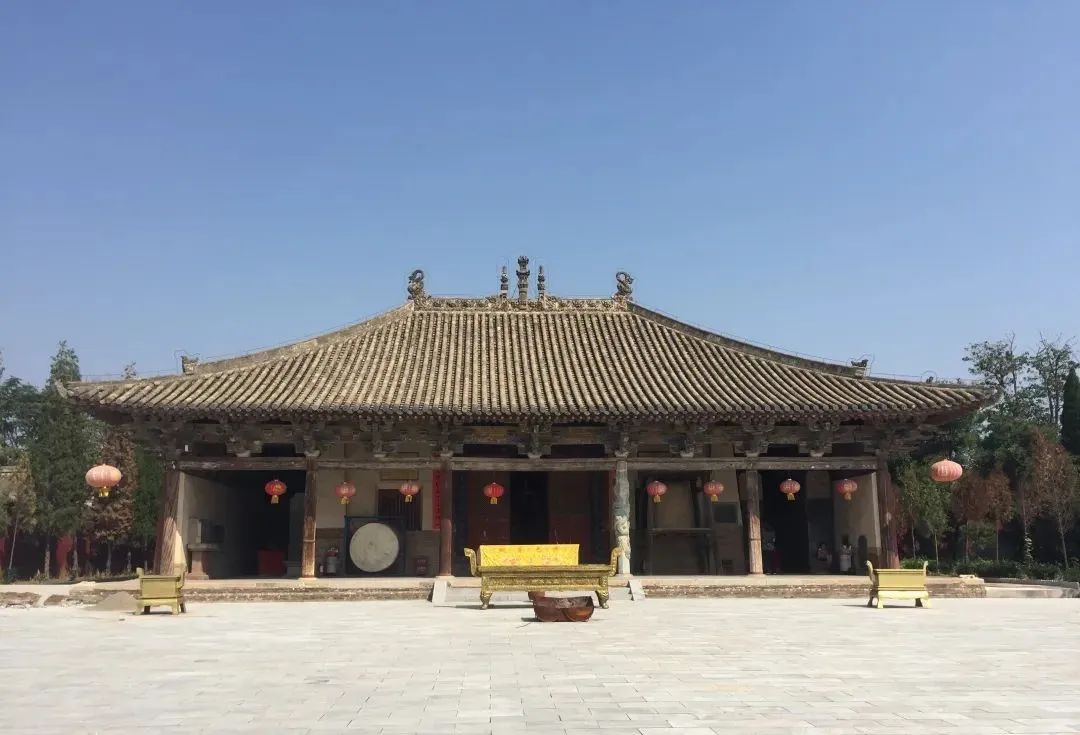
Shanxi ancient building, main hall of Wanrong Jiwang Temple
The biggest disaster they have encountered in recent years was from October 2 to 7, 2021. Shanxi suffered the strongest rainfall in autumn since meteorological records began. Within the province, six days of rainfall was equivalent to five points of the entire year of the previous year. First, 28,000 ancient buildings across the province suffered extensive damage. According to statistics from the Shanxi Provincial Cultural Relics Bureau, as of October 11, cities in Shanxi have reported that a total of 1,783 cultural relics in the province have experienced dangerous situations such as roof leakage, wall cracking and collapse, foundation collapse, and surrounding slope protection and wall collapse to varying degrees.
After preliminary assessment, among the cultural relics affected by the disaster, 661 are cultural relics protection units at the city and county levels, and 803 immovable cultural relics have not yet been approved and announced as cultural relics protection units. These cultural relics at the city, county and unclassified levels belong to low-level cultural protection units, accounting for more than 80% of all damaged cultural relics. These low-level cultural relics scattered in remote places have attracted national attention for the first time.
Song and Jin Dynasty buildings under threat of floods
Recently, the "Completion Ceremony of Shanxi Post-disaster Cultural Relics Restoration Project" was held at Yuanrong Temple in Zhongcun, Gaoping City, Jincheng, Shanxi Province. This event brought everyone to this somewhat remote village in southern Shanxi. Yuanrong Temple seems to be a very ordinary one among the nearly 1,500 low-level cultural relics affected by floods in 2021, but it has its own unique life experience.
Yuanrong Temple is located in Zhongcun, Shennong Town, Gaoping City, Jincheng City, Shanxi Province. It is tightly surrounded by residential buildings. In the past few decades, it has been used as a school, granary and mill. It can still be seen in the unrestored south hall today. A machine for grinding rice noodles that has been built into the wall.
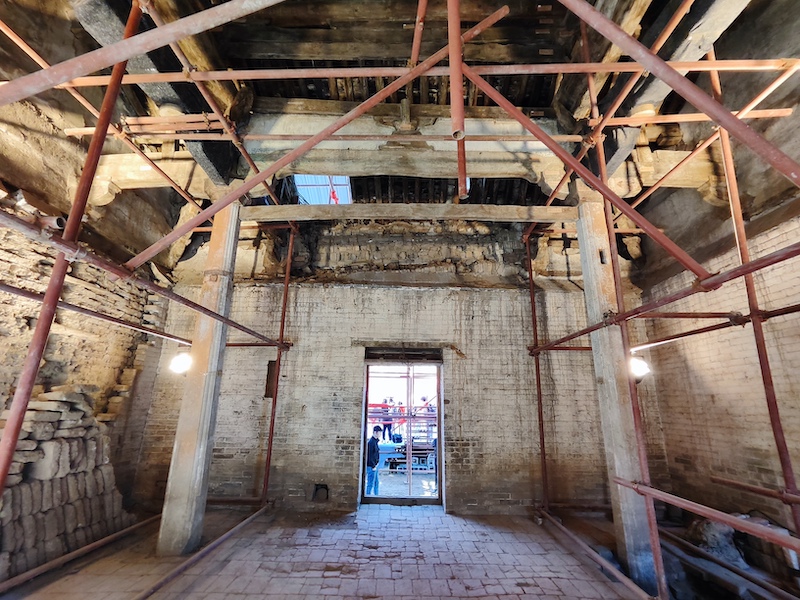
The current South Hall of Yuanrong Temple
After passing through batches of users, Yuanrong Temple has endured tenaciously. Villagers over sixty years old remember that the gables and back walls of the main hall were once covered with Buddhist murals. Although there are no Buddha statues and murals now, and even the main hall no longer exists, there are still a few villagers who come to burn incense on the first and fifteenth day of the lunar month. In the past ten years or so, Yuanrong Temple has no longer been used. Across the wall from Yuanrong Temple is a newly renovated courtyard repaired by diligent villagers. However, the Yuanrong Temple on the other side of the wall is deteriorating day by day.
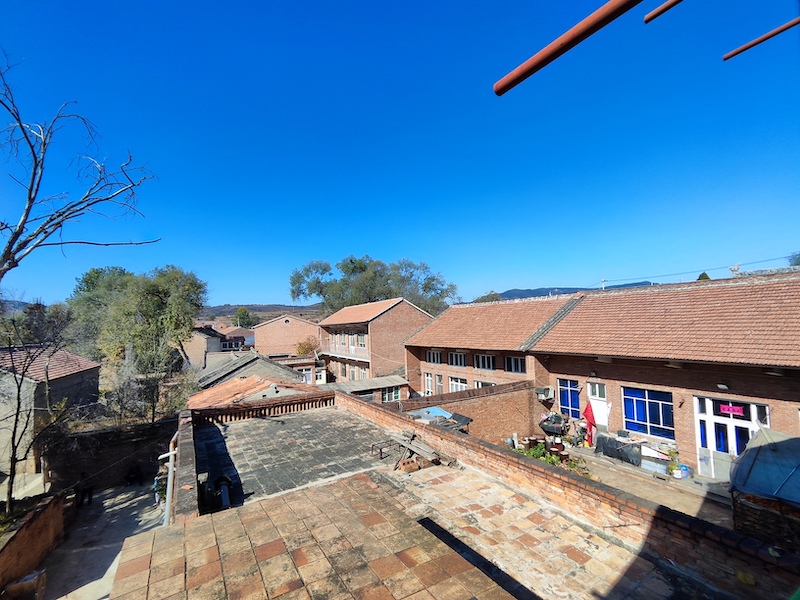
Villagers’ houses separated by a wall from Yuanrong Temple
Yuanrong Temple is a cultural relic site of the third cultural relic census and is an unclassified cultural relic. The existing courtyard covers an area of about 800 square meters. The main buildings include Chunqiu Tower, Xido Hall and South Hall.
In the second half of 2021, Zhang Jianjun, a history teacher from Jincheng High School, came here when he was looking for historical sites. Through the characteristics of the beams in the South Hall, he judged that this was an ancient building built in the Northern Song Dynasty and rebuilt in the Jin Dynasty. Before the Jin Dynasty, the wooden buildings in our country were the most popular. Only more than 130 have been discovered before.
Local officials in charge of cultural relics, the local government, and experts from the School of Archeology and Museology of Peking University who later came here confirmed Zhang Jianjun's judgment. After investigation and dating, the expert team believed that the gate hall of Yuanrong Temple should have been built in the middle and late Northern Song Dynasty, and the Jin Dynasty. Large-scale reconstruction was carried out in the middle and late Dynasty, and all the brackets under the eaves were replaced, but part of the Song Dynasty structure was retained.
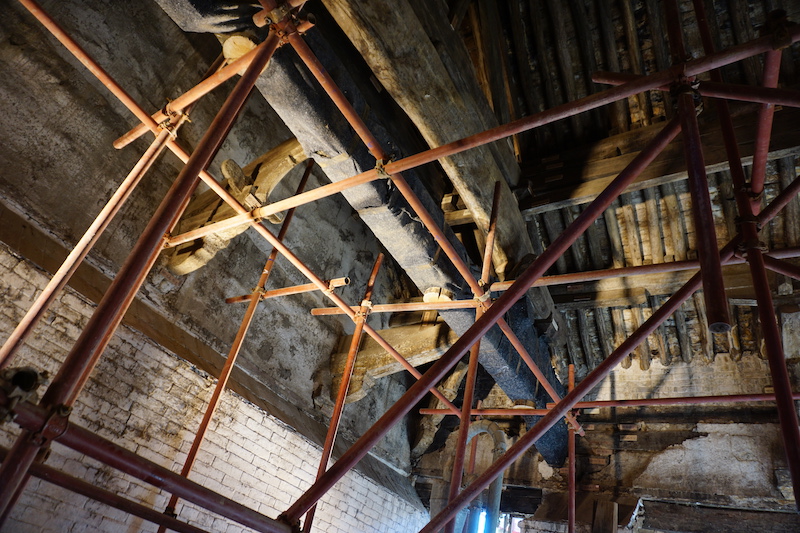
The wooden structure of the south hall of Yuanrong Temple. After studying the wooden structure, the expert team determined that it is an ancient building from the Song and Jin Dynasties.
This ancient building from the Song and Jin Dynasties had just come into the view of researchers, and before it could be properly protected, a heavy rain came.
After this heavy rain, the roofs of the Xido Hall and Chunqiu Building of Yuanrong Temple collapsed, the roofs leaked, the tile ridges were detached and the tiles were broken, the mud backing was exposed and drained, and the wooden base was soaked and rotted.
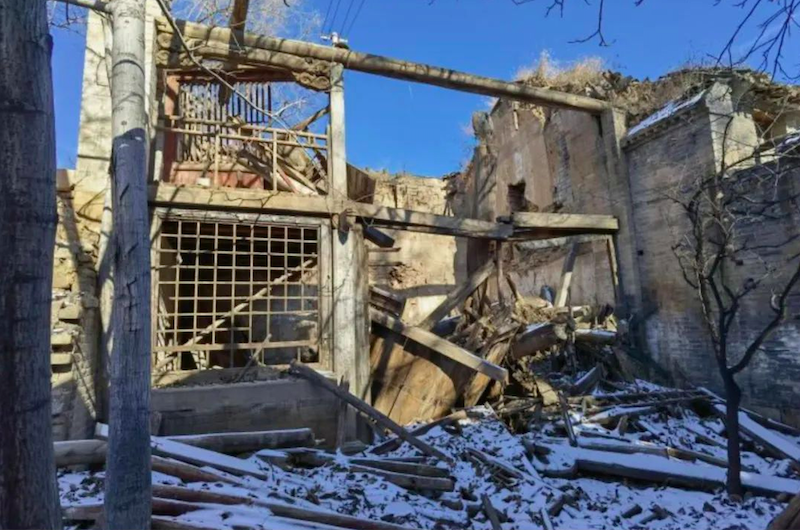
The collapsed wind and rain building
In a previous interview with China News Weekly, He Dalong, a research librarian at the Shanxi Provincial Institute for the Protection of Ancient Architecture and Colored Sculpture Murals and Secretary-General of the Shanxi Provincial Ancient Architecture Association, said that after the heavy rains in October, Shanxi Province organized a team of 10 experts to The research team went to various cities and counties. When the survey ended in December, they counted more than 1,000 severely damaged cultural relics. The Shanxi Provincial Cultural Relics Bureau then organized a briefing meeting for state-owned and private construction companies. Immediately after the meeting, more than 200 protection sheds were built for the most serious ancient buildings. He Dalong said: "Before the rescue funds were in place, everyone It has already started to move, such as the Yuanrong Temple. If we didn’t rescue it at that time, it might be gone.”
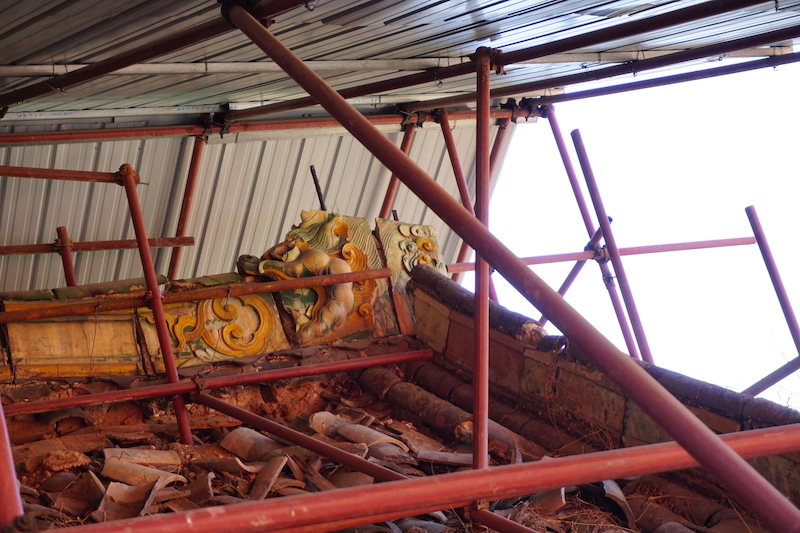
The protective shed built in the south hall of Yuanrong Temple
Also after the heavy rain in Shanxi, the China Cultural Relics Conservation Foundation took immediate action. The Tencent Charity Foundation responded quickly and donated 10 million yuan to 9 immovable cultural relics protection and repair projects. All of these projects have recently been completed and passed acceptance inspection. Rongsi is one of them.
Repair and protection of ancient buildings
A glimpse into these nine immovable cultural relics protection and restoration projects reveals the threats faced by Shanxi's buildings and the difficulty of repairs.
Taking Yuanrong Temple as an example, in March this year, a renovation team entered Yuanrong Temple to repair the Chunqiu Tower and Xido Hall built in the Qing Dynasty. According to the inscription in the temple, the Chunqiu Tower was built in the sixth year of Qianlong's reign. There is a Chunqiu Tower built in the 41st year of Qianlong's reign in the Yandi Temple in this village, which was used as a reference.
Specifically, the roofs of Chunqiu Tower and Xido Hall were replenished with reference to the local architectural styles of the same type at the same time, with missing balconies and main ridges restored according to the design drawings; the missing rafters, balusters, eaves, and eaves were replaced with wooden base layers. Components such as tile wood, hanging fish, grass, and seamed boards were re-installed according to the design drawings, and the colors will match the old ones after completion; the beams and columns were supplemented with reference to the local building styles of the same type at the same time. The missing beams, brackets, and Hangzi melon columns, fork handles and other wooden components were re-installed according to the design drawings, and the color will match the old one after completion.
For the wall part, remove cracks and air bulges in the plaster layer of the interior wall, clean the peeling parts, and re-level the plaster according to existing plastering practices. The doors and windows are also decorated with front eaves and gold parts based on the local architectural styles of the same period. The front eaves decoration is re-installed according to the design drawings. After completion, the colors will match the old ones.
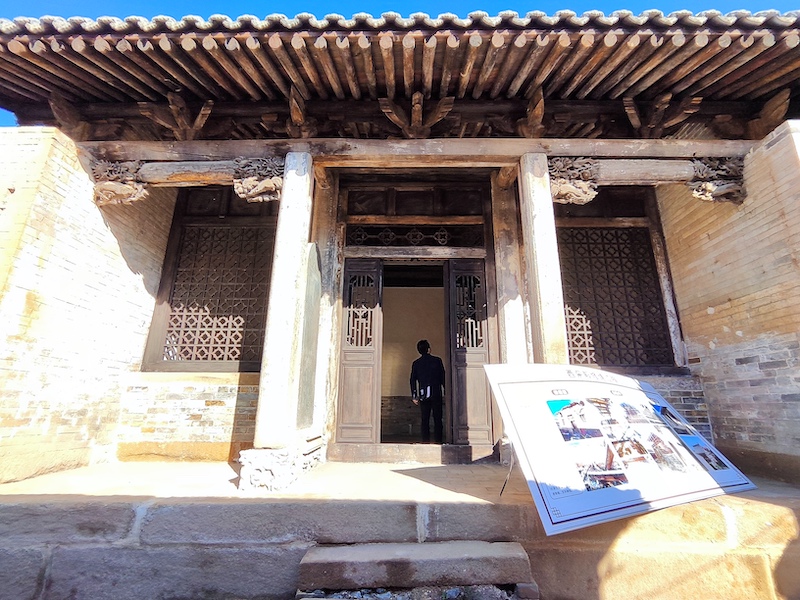
The restored Xido Hall
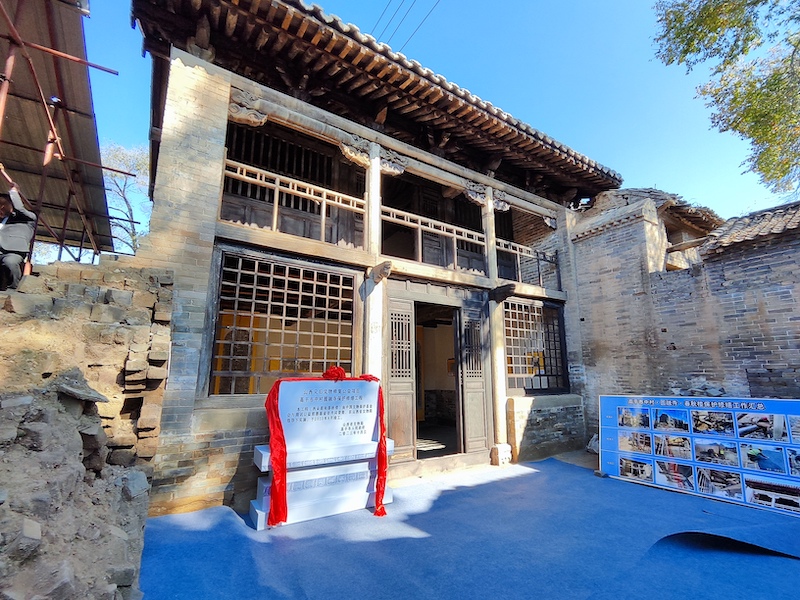
The renovated Fengyu Tower
When The Paper went to visit, the most important part of Yuanrong Temple, the South Hall in the Song and Jin Dynasties, had not yet begun to be repaired, because the existing roof of the South Hall was a hanging mountain top rebuilt in the Ming and Qing Dynasties, while the roofs in the Song and Jin Dynasties were more complicated and standardized. Experts have not yet come up with a unified opinion on whether the repairs to the higher Xieshan Mountain should maintain its current shape or restore it to the original Xieshan Mountain.
Eight other projects being carried out at the same time as the Yuanrong Temple renovation project were severely damaged by the floods in 2021. Among them, the roof of the main gate of Xianqing Temple, located beside the village road in Xin'an Quanzhen, Lucheng District, Changzhi City, disappeared during the flood, and the roofs of the east and west makeup buildings on both sides also no longer exist. When the cultural conservator opened the gate after the rain, the courtyard was already covered with mud. The collapsed roof was piled on the stage on the second floor of the mountain gate, and beams and rafters were stuck in random directions on the rubble.
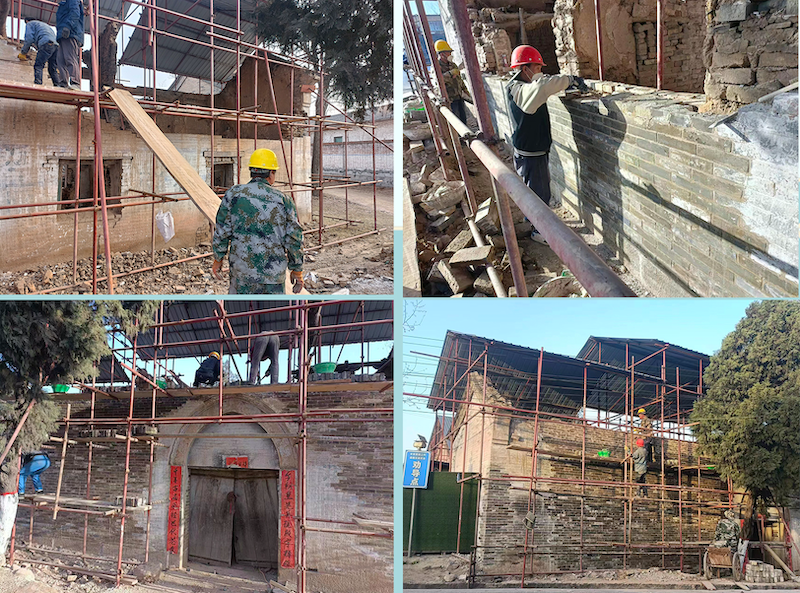
During the restoration process of Xianqing Temple
The renovation of Xianqing Temple has been completed, and all the collapsed and damaged houses have been repaired.
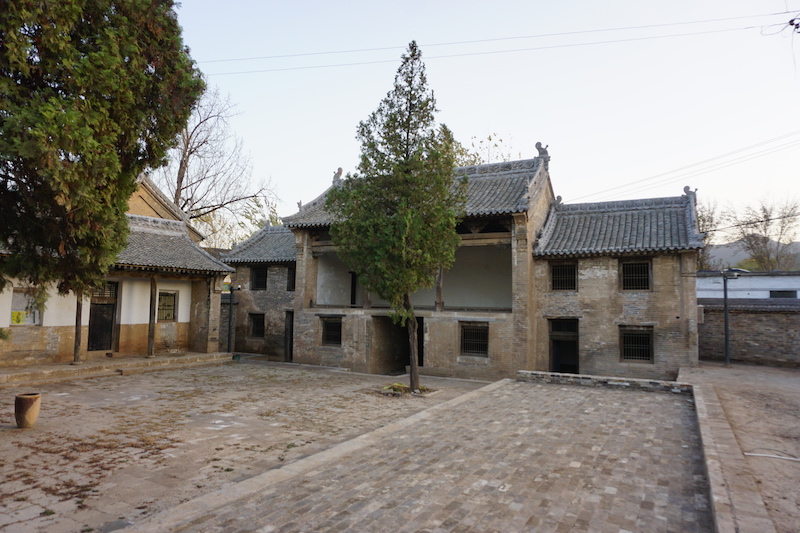
Xianqing Temple now
In addition to Yuanrong Temple and Xianqing Temple, the low-level cultural relics restoration projects carried out with funds donated by Tencent also include the Song family residence in Guangling County, Datong City, Liubei Sanguan Temple in Yaodu District, Linfen City, and Nanding Tang in Yicheng County, Linfen City Wang Temple, Fenggu Pushou Temple in Qi County, Jinzhong City, Sizhuang Sanxue Temple in Yangqu County, Taiyuan City, Yuhuang Temple in Guangcun, Xinjiang County, Yuncheng City, and Nandi Tangdi Temple in Yangcheng County, Jincheng City.
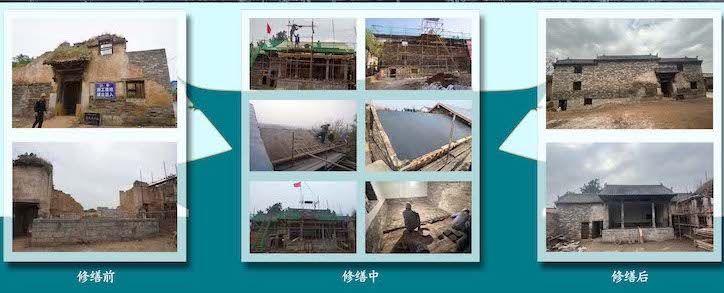
Renovation project of Tangdi Temple in Nandi, Yangcheng County, Jincheng City
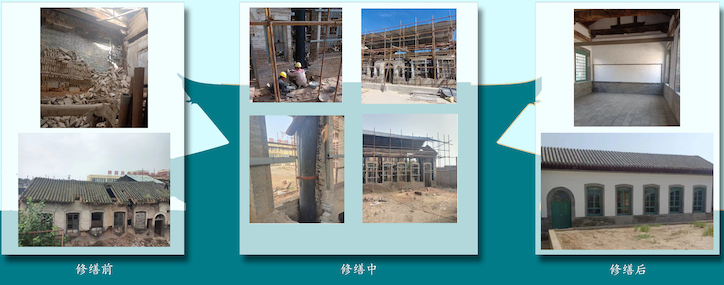
Emergency protection project of Beisangong Temple in Guangdu District, Linfen City
At a recent press conference, Liu Yuzhu, chairman of the China Cultural Relics Conservation Foundation, said: The project including the Yuanrong Temple is a useful exploration of social forces participating in post-disaster restoration of cultural relics, and gives full play to the active role of social forces in cultural relics protection. The China Cultural Relics Conservation Foundation uses funds efficiently and in compliance with laws and regulations to ensure that all donated funds are used for the protection of cultural relics themselves, so that damaged cultural relics and ancient buildings can be given a new lease of life. As a major cultural relics province, Shanxi is rich in cultural relics resources and its protection tasks are also more arduous. Fully mobilizing social forces and involving all people in protection are effective ways to protect Shanxi's precious cultural relics. The China Cultural Relics Conservation Foundation will continue to leverage its platform advantages, bring together more social forces, and assist the high-quality development of cultural relics undertakings.
These projects are also useful explorations for social forces to participate in post-disaster restoration of cultural relics.
The state of preservation of low-level cultural relics is worrying
Shanxi's cultural relics protection structure is like a "pyramid". At the "spire" are 531 national key cultural relics protection units and 779 provincially protected units. Municipal-level, county-level and unclassified cultural relics account for the vast majority of the remaining ones. Taking Changzhi as an example, there are a total of 6,359 low-level immovable cultural relics. They are weak and need more attention.
This reporter’s interviews in southern Shanxi, including Jincheng, Gaoping, Changzhi and other places, found that even national treasure units, when they are located in remote areas, are often guarded by only a few older cultural conservators, and the conditions are relatively difficult. .
In 2022, the Provincial Cultural Relics Bureau organized a special survey of low-level cultural relics in the province. After investigation, there are more than 50,000 low-level immovable cultural relics in the province, accounting for about 94% of the total of the "Three Censuses", ranking fourth in the country, with a large number, diverse types, and scattered distribution. For a long time, due to historical debts such as insufficient attention, insufficient investment guarantee, and inadequate management, about 80% of these cultural relics have been in varying degrees of danger, and their preservation status is worrying.

Cultural keeper in Chongqing Temple
"The so-called low-level immovable cultural relics refer to city- and county-level cultural relics protection units and immovable cultural relics that have not yet been approved and announced as cultural relics protection units. Among the more than 50,000 immovable cultural relics, low-level cultural relics account for the vast majority, but due to Shanxi cultural relics Although many county-level cultural relics units have high cultural relic value, they can only 'condescend' to low-level cultural relics." Wang Zhenhua, director of the Cultural Relics Resources Division of the Provincial Cultural Relics Bureau, said in a previous interview.
For cities and counties with financial difficulties and heavy protection tasks, how to effectively protect these cultural relics that have a large number but receive little attention is an arduous task. It is estimated that the funds needed to repair all low-level cultural relics in Shanxi Province are about 20 billion yuan, and the funds needed to implement key repairs and rescue reinforcements are about 8 billion yuan.
At the end of 2022, Shanxi cultural relics will have a good thing - the Provincial Department of Finance and the Provincial Cultural Relics Bureau jointly issued a document to encourage cities and counties (cities, districts) to use general government bonds to implement comprehensive protection of low-level immovable cultural relics. "Our basic idea is to use general government bonds and spend about 10 years to comprehensively improve the preservation status of low-level cultural relics, achieve all repairs that need to be repaired, and fully promote the construction of a cultural relics safety supervision platform to firmly maintain the bottom line of cultural relics safety." Provincial Finance Introduction by Li Jintao, Director of the Cultural Department of the Department.